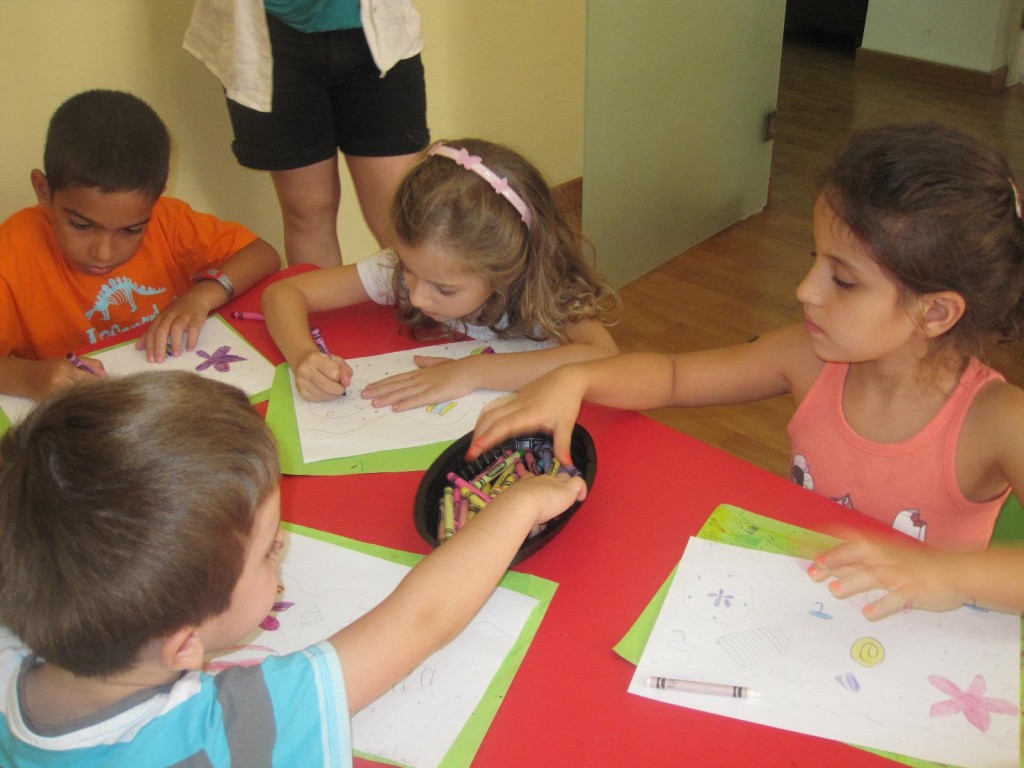Drawing on the Autism Spectrum
 We often have students with autism in our weekly Young Rembrandts classes. Art, specifically drawing, is a form of controlled communication and can be especially beneficial to a child with autism. For children that have difficulty with receptive language or sharing themselves verbally, drawing provides them a unique outlet. When children draw they can tell their story, communicating thoughts and moods without language. They may also find comfort in the ability to control the pace and structure of communication, especially if they feel they have less control in other areas. Sharing through drawing has value in and of itself, and can help all learners develop their communication and language capabilities.
We often have students with autism in our weekly Young Rembrandts classes. Art, specifically drawing, is a form of controlled communication and can be especially beneficial to a child with autism. For children that have difficulty with receptive language or sharing themselves verbally, drawing provides them a unique outlet. When children draw they can tell their story, communicating thoughts and moods without language. They may also find comfort in the ability to control the pace and structure of communication, especially if they feel they have less control in other areas. Sharing through drawing has value in and of itself, and can help all learners develop their communication and language capabilities.
Here’s a story of one child’s experience in Young Rembrandts classes:
More than Expected
Recently, we received a call from a parent whose child was taking Young Rembrandts classes. This mom, Michelle, who calls herself an “autism advocate,” called to say how much the classes were benefiting her son. Seven-years-old now, her son was diagnosed with autism at 18 months and was told he would always be low functioning. But after many years of education and special therapies, he is now classified with high functioning autism.
When Michelle first saw the Young Rembrandts enrollment flyer, she dismissed it, calling herself an “art snob.” As a child, she was not allowed to trace, use coloring books, color in the lines or anything that might stifle her creativity, so the thought of enrolling her son in a structured art class didn’t appeal to her. Eventually, she reconsidered her decision and thought the class could be a good experience for him, not for the art, but for the social interaction. She readily said, “I didn’t expect good instruction and didn’t care.” She wanted the social interaction and the ability to assess him in an after school environment.
Michelle enrolled her son in a session of eight classes and attended the first class to observe him in the group setting. She wanted to be sure he was comfortable and doing well. What she experienced was not what she anticipated. Much to her own surprise, she enjoyed the instruction the teacher was sharing with the young students and felt she was learning along with them. She noticed her son modeling positive peer behavior; he seemed to feel good about the class overall, and she was “floored” by his level of participation and engagement in the learning process. He completed the drawing and coloring was very pleased and ready to return the following week.
Michelle’s own beliefs about the way to teach art were powerfully affected by her observations. She enrolled her son in our program, not expecting anything from the education, but was most impressed by the educational process. She reconsidered the notion that giving information and using tools to learn art would stifle creativity. Involvement in her son’s education had made her keenly aware of his need to learn in an orderly, sequential, visual, step-by-step progression, and she saw how the class provided this structure for him.
Excerpt from Being Visual (pg 131-132)
Drawing classes can provide autistic children a safe social setting where they can be part of the group, while participating in a creative, focused and independent activity.
There is a really significant connection between autism and visual learners that profoundly affects the effectiveness of their communication and learning and drawing classes can help.










